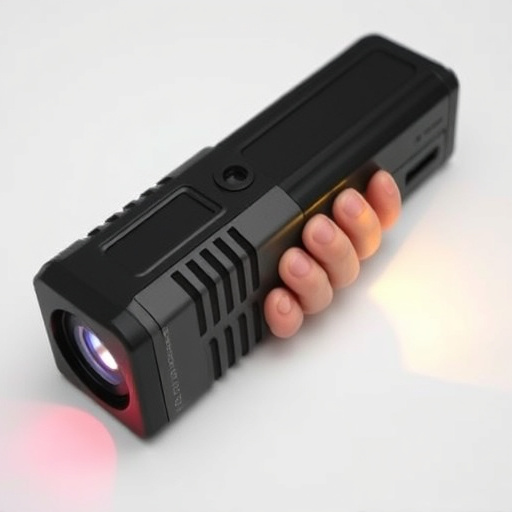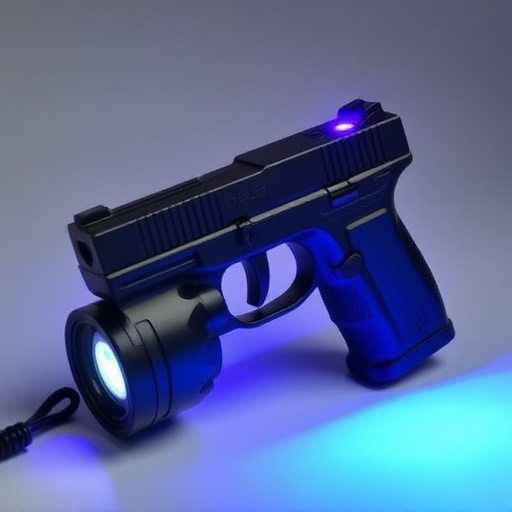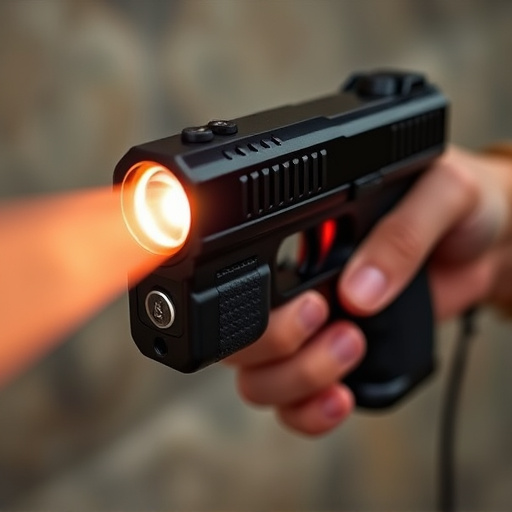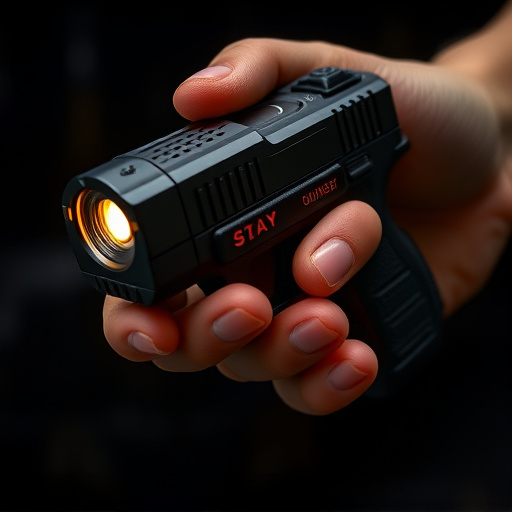Slider stun guns are a specialized type of Electronic Control Device (ECD) with adjustable output levels for precise control. They deliver high-voltage shocks for immediate disorientation and enhance visibility in low-light conditions. Compared to Tasers, which disrupt muscle control over a longer range, slider stun guns are more powerful for penetrating clothing but have stricter legalities varying by region; always check local laws before considering their use.
“Unraveling the intricacies of self-defense tools, this article sheds light on Tasers and stun guns, two non-lethal weapons with distinct features. Understanding their unique design and functionality is crucial for informed decisions. From the electric shocks of Tasers to the high-voltage bursts of stun guns, we explore how these devices work and their varying capabilities.
We delve into key differences, including effectiveness, safety concerns, and legal considerations, especially with modern advancements like the slider stun gun.”
- Understanding Tasers: Design and Functionality
- Exploring Stun Guns: Features and Variations
- Key Differences: Effectiveness, Safety, and Legalities
Understanding Tasers: Design and Functionality

Tasers, officially known as Electronic Control Devices (ECDs), are non-lethal weapons designed to temporarily incapacitate a target through electrical muscle stimulation. They work by firing two small probes connected to wires, which deliver a powerful electric current that disrupts the target’s neuromuscular system. This causes intense pain and temporary paralysis, enabling the user or authorities to control and subdue the individual safely.
The design of a Taser typically includes a handle with triggers for firing the probes and a power source, often rechargeable batteries. Modern Tasers, like those equipped with slider stun guns, offer adjustable output settings, allowing users to select the level of force needed based on the situation. This versatility makes Tasers a popular choice for law enforcement and self-defense applications, providing an effective non-lethal solution in various scenarios.
Exploring Stun Guns: Features and Variations

Stun guns, also known as electronic control devices (ECDs), are non-lethal weapons designed to temporarily incapacitate a target through electric current. They operate by disrupting muscle control in the body, causing temporary paralysis and disorientation. These devices come in various forms, each with unique features tailored to different needs and preferences.
One notable variation is the slider stun gun, which distinguishes itself through its innovative design. This type offers adjustable output levels, allowing users to select the intensity of the shock based on the situation and target. The slider mechanism provides a user-friendly interface for precise control, making it versatile enough for both personal defense and professional applications. Additionally, these stun guns often incorporate bright LED lights for improved visibility in low-light conditions, enhancing their effectiveness as self-defense tools.
Key Differences: Effectiveness, Safety, and Legalities

When comparing a Taser and a stun gun, understanding their key differences is crucial for informed decision-making, especially considering legalities and safety concerns. Both devices are non-lethal weapons designed to temporarily incapacitate individuals, but they function differently. A Taser uses electrical pulses to disrupt muscle control, leading to temporary paralysis, while a slider stun gun delivers a high-voltage electric shock that overloads the body’s nerve system, causing immediate disorientation and muscle spasms.
In terms of effectiveness, Tasers are generally considered more powerful and reliable for law enforcement due to their ability to penetrate clothing and provide a longer range of impact. Stun guns, on the other hand, offer a shorter effective range and may not penetrate certain types of fabrics as effectively. Legally, the use and possession of these devices vary significantly based on jurisdiction, with some countries or regions allowing only law enforcement agencies to use Tasers while stun guns might be more widely available for civilians in specific forms, such as slider stun guns. Always check local laws before considering the purchase or use of either device.
When comparing a Taser to a slider stun gun, understanding their distinct features is key. Tasers, with their unique electroshock technology, offer a non-lethal force option for law enforcement and personal defense. On the other hand, slider stun guns provide a more traditional approach with high voltage and current, capable of temporarily disabling an aggressor. In terms of effectiveness, both have proven successful in de-escalating situations, but their mechanisms differ significantly. Safety concerns arise with proper training and understanding of usage for both tools. Legalities vary worldwide, so it’s crucial to check local regulations before considering either as a personal defense mechanism or for professional use.
